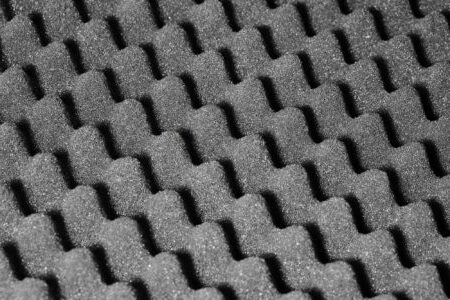Foam padding can be recycled. However, it cannot be easy to recycle foam padding because it is a lightweight, low-value material that most recycling facilities do not easily recycle.
It is also often contaminated with dirt, food, and other debris, making recycling difficult. If you want to recycle foam padding, you may need to take it to a facility that specializes in recycling foam or find a company that will accept it for recycling. It is always a good idea to check with your local recycling facility or waste management company to see what options are available for recycling foam padding in your area.
How to Recycle Foam Padding
There are a few steps you can follow to recycle foam padding:
- First, check with your local recycling facility or waste management company to see if they accept foam padding for recycling. Some facilities may have specific guidelines or requirements for recycling foam padding, so checking with them before recycling it is essential.
- If your local facility does not accept foam padding, you may be able to find a company that specializes in recycling foam. These companies may take foam padding for a fee, or you may be able to find one that will accept it for free.
- If you cannot find a facility that will recycle foam padding, you may be able to repurpose it for another use. For example, you could cut it into smaller pieces and use it as packing material or as a cushion for a pet bed.
- If you cannot recycle or repurpose foam padding, it can be disposed of in a landfill. However, trying to recycle or reuse it whenever possible is essential, as foam padding can take hundreds of years to break down in a landfill.

Where to Recycle Foam Padding
There are a few options for recycling foam padding:
- Check with your local recycling facility or waste management company to see if they accept foam padding for recycling. Some facilities may have specific guidelines or requirements for recycling foam padding, so checking with them before recycling it is essential.
- Look for a company that specializes in recycling foam. These companies may accept foam padding for a fee, or you may be able to find one that will accept it for free.
- Contact your local government or a nearby recycling center to see if they have any recommendations for recycling foam padding in your area.
- Search online for foam recycling programs or companies in your area. Many organizations, such as Earth911 and the Alliance of Foam Packaging Recyclers, have directories of foam recycling facilities that you can use to find a place to recycle foam padding near you.
It is always a good idea to check with multiple facilities to see which one can offer the most convenient and cost-effective solution for recycling your foam padding.
The Importance of Recycling Foam Padding
Recycling foam padding is essential for a few reasons:
- Saves natural resources: Foam padding is made from polyurethane derived from fossil fuels. Recycling foam padding helps to reduce the demand for new polyurethane, which in turn helps to conserve natural resources.
- Reduces waste: Foam padding is a lightweight, low-value material that most recycling facilities do not easily recycle. As a result, it can often end up in landfills, where it can take hundreds of years to break down. Recycling foam padding helps to reduce the amount of waste that ends up in landfills.
- Reduces greenhouse gas emissions: The production of polyurethane generates greenhouse gas emissions. Recycling foam padding helps to reduce the demand for new polyurethane, which in turn helps to reduce greenhouse gas emissions.
- Creates new products: Recycling foam padding can help to develop new products, such as picture frames, insulation, and packing materials.
Overall, recycling foam padding is a meaningful way to conserve natural resources, reduce waste, and reduce greenhouse gas emissions.
Some Difficulties With Recycling Foam Padding
There are a few difficulties with recycling foam padding:
- Limited recycling facilities: Many recycling facilities do not have the equipment or technology to recycle foam padding. As a result, finding a place that will accept foam padding for recycling can be difficult.
- Contamination: Foam padding is often contaminated with dirt, food, and other debris, which can make it difficult to recycle. Contamination can decrease the value of the foam padding and make it harder to recycle.
- Low value: Foam padding is a lightweight, low-value material that most recycling facilities do not easily recycle. As a result, it may not be worth the effort and cost for facilities to invest in the equipment and technology needed to recycle it.
- Transportation: Foam padding can be bulky and difficult to transport, making it challenging to get to a recycling facility.
Recycling foam padding is tricky due to limited recycling facilities, contamination, low value, and transportation challenges.
Conclusion
Foam padding can be recycled, but it can be difficult due to limited recycling facilities, contamination, low value, and transportation challenges. However, recycling foam padding is necessary because it helps to conserve natural resources, reduce waste, and reduce greenhouse gas emissions.
If you want to recycle foam padding, you may need to take it to a facility specializing in recycling foam or find a company accepting it for recycling. It is always a good idea to check with your local recycling facility or waste management company to see what options are available for recycling foam padding in your area. If you are unable to recycle foam padding, you may be able to repurpose it for another use or dispose of it in a landfill.

